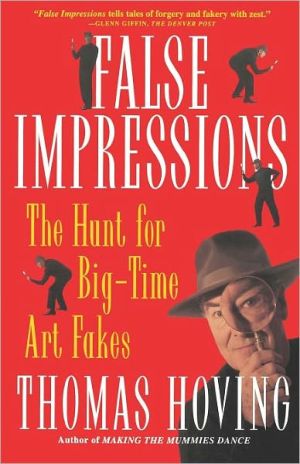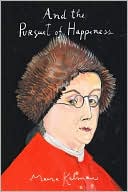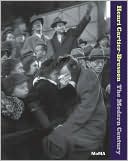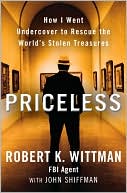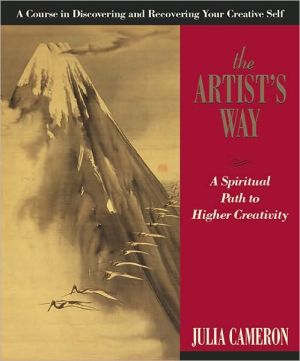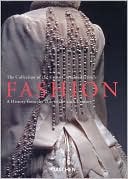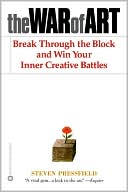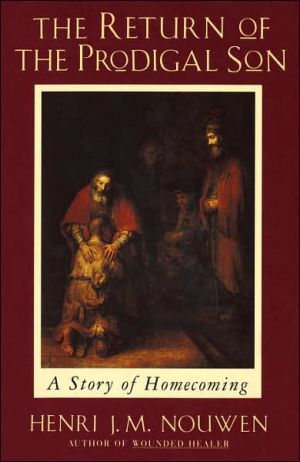False Impressions: The Hunt for Big-Time Art Fakes
Delving into one of the most sacrosanct areas of culture--fine art collecting--Thomas Hoving presents a gallery of art fakes, fakers, and the suckers who fell for the scams. From the shroud of Turin to pre-Colombian pottery, Hoving reveals the biggest, the best, the most embarrassing, and the most costly forgeries in history--many of them unknown until now. photos.
Search in google:
Delving into one of the most sacrosanct areas of culture--fine art collecting--Thomas Hoving presents a gallery of art fakes, fakers, and the suckers who fell for the scams. From the shroud of Turin to pre-Colombian pottery, Hoving reveals the biggest, the best, the most embarrassing, and the most costly forgeries in history--many of them unknown until now. photos.Publishers WeeklyTake care if you're planning to buy a Renoir landscape or a Manet-there are art fakers who can convincingly simulate the former in two hours, the latter in three, according to Hoving in this wry guide to the world of art forgeries. Hoving (Making the Mummies Dance), former director of New York City's Metropolitan Museum of Art, devotes the first several chapters to a chronological history of art faking; some readers may find this section too detailed and anecdotal. The livelier part of the book involves Hoving's reminiscences about his experiences as a student at Princeton, his apprenticeship at the Met and his sleuthing to detect art fakes. He covers such intriguing topics here as forgers who have "tricked them all," what makes an ideal fake-buster and the "sin" of labeling genuine artifacts as fakes. Noting that art forgery is as old as art, the author warns that "the art world we are living in today is a new, highly active, unprincipled one of art fakery," which he attributes to "raw commercialism" and the "get-rich quick attitude of the times." But Hoving, who enjoys showing off, leads us to believe that with him on the case, no fraud is safe. (May)
Introduction151Fakebusters, Fakers, and How to Tell a Fake192The Giddy Ancient World243The Shrouded Middle Ages374Tricks of the Renaissance and Shams of the Baroque515Victorian Shenanigans676The Golden Age of Fakes - Now!817My Early Experiences1018Young at the Game1159A Real Pro12810Busting Wolfgang14011Fakes by the Ton15012If a Fake Is So Good That It Fools All the Experts, Then...16313Has Any Faker Fooled Them All?18014Deep Suspicions19815The Pseudo-Fakebusters20916"Guardi Is Still Alive"23517The "Fhaker" with Chutzpah25618The Curious Spurious Kouros27919Con Brio311Epilogue328Notes335Index349
\ Publishers Weekly - Publisher's Weekly\ Take care if you're planning to buy a Renoir landscape or a Manet-there are art fakers who can convincingly simulate the former in two hours, the latter in three, according to Hoving in this wry guide to the world of art forgeries. Hoving (Making the Mummies Dance), former director of New York City's Metropolitan Museum of Art, devotes the first several chapters to a chronological history of art faking; some readers may find this section too detailed and anecdotal. The livelier part of the book involves Hoving's reminiscences about his experiences as a student at Princeton, his apprenticeship at the Met and his sleuthing to detect art fakes. He covers such intriguing topics here as forgers who have "tricked them all," what makes an ideal fake-buster and the "sin" of labeling genuine artifacts as fakes. Noting that art forgery is as old as art, the author warns that "the art world we are living in today is a new, highly active, unprincipled one of art fakery," which he attributes to "raw commercialism" and the "get-rich quick attitude of the times." But Hoving, who enjoys showing off, leads us to believe that with him on the case, no fraud is safe. (May)\ \ \ \ \ Library JournalThe former Director of the Metropolitan Museum of Art here discloses shocking details of major art forgeries and the intricate chicanery of con artists who have duped the world's most prestigious art institutions, art experts, and collectors. Hoving (Making the Mummies Dance, LJ 11/1/92) traces the earliest art deceptions from the time of the Phoenicians, through ancient Roman forgeries of Greek artifacts and the innumerable crucifixion relics of the Middle Ages, to the phony sculpture, paintings, documents, coins, ivories, and gems created now largely for profit. Besides greed as the prime motivation, Hoving also tells wonderful tales of revenge by disgruntled employees aimed at the elitist, arrogant personalities that pervade the art world. As a "fakebuster," Hoving uses his sense of connoisseurship and gut reaction to distinguish originals, which he believes convey a lofty humanity that fakes lack. Museum lovers will find it disconcerting to learn that still undetected frauds are prominently on view. Recommended for general and museum collections.-Joan Levin, MLS, Chicago, Ill.\ \ \ Kirkus ReviewsJuicy tales of intrigue and bravado from a "fakebuster" extroadinaire.\ Hoving, the notorious former director of New York City's Metropolitan Museum of Art and author of Making the Mummies Dance (1993), etc., has found his calling in exposing art forgeries. As a roving fakebuster (the term is the author's) Hoving draws on his connoisseurship and position as an art world insider to investigate and pursue his hunches about inauthentic works of art. He provides us first with a history of the practice of art forgeries from the Phoenicians to the present. Hoving then offers case histories, including some he investigated. It's startling to learn how many preeminent art professionals (including the author himself) have been duped by forgers. Motivated by "need, speed and greed," art scholars, collectors, and curators alike have been seduced by the most obvious of fakes. Among the most startling cases Hoving cites are the three statues of Etruscan Warriors at the Metropolitan Museum (actually created in Italy some 70 years ago) and the "Curious Spurious Kouros" at the Getty, as well as the dubious model for Michelangelo's David. Hoving also discusses the confusion caused by the "Grand Master" of forged Renaissance drawings, Eric Hebborn, and the remarkable forgeries of Han van Meegeren, the "Vermeer Man." So what does it take to be a fakebuster? "The mental makeup of a detective; the sensitivity of a seasoned connoisseur; the determination of a fierce, often acidulously antiestablishment independent; a scholar with years of saturation in every field of art; plus some experience as a successful forger."\ False Impressions, needless to say, is filled with a certain amount of self-praise and one-upmanship, as well as a zestful airing of the art world's dirty laundry. And though Hoving is certainly is no prose stylist, all the same he produces a most absorbing book.\ \ \
